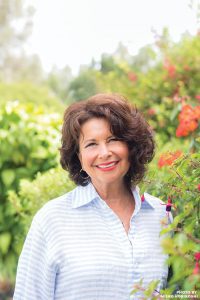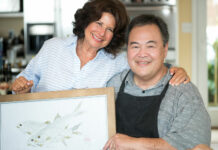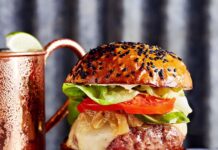
After a flurry of last-minute crises and a mishmash of disorganized packing, I am finally off, boarding a plane to join our friends in Steamboat Springs, Colorado, for our annual sojourn to the snow. We have been taking this trip together for decades. We ski, take walks, do yoga, cook meals, drink too much wine, and laugh a lot. Over the years, the laughing has become more important than than the skiing (and a lot easier), and our shared history, our memories, are the foundation upon which we move forward together and mark time.
Many years ago, Native Hawaiian historian Senator Kalani English told me that in order to move forward, you must understand the past. “Time is meaningless without orientation,” he explained. “Finding the ancient connections within ourselves is the key to finding the future.”
This sentiment rings particularly true in the story “Our Kūpuna Islands,” by Teya Penniman. The Hawaiian archipelago is more than the five islands we know best; it is actually a collection of more than 130 islands, atolls and shoals stretching more than 1,600 miles across the Pacific. Hawaiians call these Na Mokupuni Na Kūpuna, “The Islands of the Ancestors.” Those found northernmost are more than 7 million years old, blips in the sea that grow increasingly larger and higher as you travel southeast, marking the millennia until you reach the newly forming seamount, Kama‘ehuakanaloa, just beyond Hawai‘i Island. What is old is once again new as this nascent volcano reaches for the surface, perpetuating the basaltic cycle of rise and fall. One day it, too, will be home to new species of plants and animals, as have all the kūpuna (ancestor) islands that came before.
While sustainability doesn’t have to go back millennia, practices of the past often inspire the present. In “Finding Their Roots,” by Rita Goldman, we are reintroduced to our former managing editor, Lehia Apana. She and husband Brad Bayless left the corporate world to become farmers, and found their calling in agroforestry. Hawai‘i once sustained a population similar to that of today and was completely self-sufficient. Today, however, we import more than 85 percent of our food, and Lehia and Brad are committed to applying the wisdom of their Hawaiian ancestors to their farming practices in the hopes that they may support Maui’s food security in the future.
Did you know that sustainability also has a flavor? In “A Tree, a Trio & a Treat,” dining editor Becky Speere writes about her experience at Māla Ocean Tavern, a venue which has recently garnered accolades due in large part to executive chef Alvin Savella. Born and raised on Maui, chef Savella honors his past by serving traditional dishes made with locally sourced produce, fish and beef. New tongues taste this history, and in doing so perpetuate its significance.
If you’re the kind of reader who wants to dig in with both hands, don’t miss “Pay it Forward,” our story on the latest trend in travel, voluntourism. Mindful visitors can gift their time in a meaningful way, giving back to the island they love by volunteering to, say, clean up a local beach, plant native species or simply take a shelter dog out for a day of fun.
We have a long way to go before we are once again self-sufficient, but every day we make progress, whether it’s preserving our culture, conserving our wildlife or implementing ancient farming techniques. We need each other to stay connected, to laugh and to be healthy, and we need to honor the wisdom of our past in order to sustain our future.
My plane lands and I make the trek to our condo. Even before I open the door, I hear laughter and know my friends have already gathered. Suddenly, I feel renewed, and as I swing open the door, am received with shouts of joy and open arms. There is indeed more than one kind of sustainability.
A hui hou,
Diane Haynes Woodburn, publisher




